Biden’s Immigration Crisis
Immigration policy is harder than it looks.
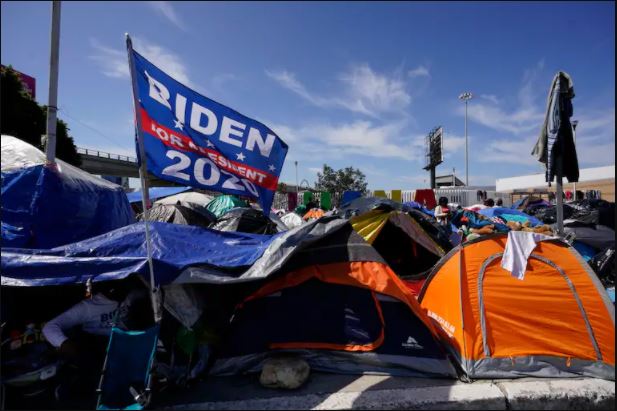
Despite President Biden’s best intentions, would-be migrants from Latin America are flooding the US border. After four years of deliberate cruelty under the Trump administration, this was to be expected. Alas, there are no easy solutions.
A Washington Post report (“‘No end in sight’: Inside the Biden administration’s failure to contain the border surge“) by Ashley Parker, Nick Miroff, Sean Sullivan, and Tyler Pager is unsparing.
Shortly before Christmas last year, Susan Rice and Jake Sullivan, two top advisers to President-elect Joe Biden, sat for an interview with EFE, a Spanish wire service, to issue a stark warning to migrants considering journeying north to the nation’s southern border: Don’t come now — but help is on the way.
The next day, Biden was similarly pointed, saying his administration — while eager to roll back Donald Trump’s immigration policies — first needed to implement “guardrails” to avoid winding up with “2 million people on our border.”
Less than a month later, the new president began tearing down some of the guardrails himself. He issued five immigration executive orders on Inauguration Day alone and promised an immigration policy far more humane and welcoming than that of his predecessor. His administration also began allowing unaccompanied minors into the country, a marked departure from the Trump administration’s approach.
As one might expect, the latter signal overwhelmed the pleas to be patient.
Now, the Biden administration is scrambling to control the biggest surge in 20 years, with the nation on pace for as many as 2 million migrants at the southern border this year — the outcome Biden said he wanted to avoid.
Along with the existing struggle to combat the coronavirus, immigration has emerged as one of the administration’s most urgent challenges — seized on by Republicans as a political cudgel, posing risks to Democrats in the 2022 midterms and potentially undermining Biden’s governing agenda. The issue also threatens to overshadow the president’s recent political victories in passing a $1.9 trillion coronavirus relief package and making rapid strides in vaccination efforts.
The situation at the border — which Biden and his advisers steadfastly refuse to call a crisis — is the result of an administration that was forewarned of the coming surge, yet still ill-prepared and lacking the capacity to deal with it. Administration officials have been plagued by muddled messaging, sometimes making appeals that seem directed more at liberal activists than the migrants they need to dissuade from coming to the country.
The situation is in fact a crisis. It’s mostly one not of their own making. But it’s a crisis nonetheless. Even Democratic allies acknowlege as much.
The administration also took several steps — including saying it would allow unaccompanied minors into the country — that increased the flow of migrants and encouraged more to try their luck. There are now more than 10,000 unaccompanied migrant children in the care of the Department of Health and Human Services, and 5,000 more in the care of Customs and Border Protection, nearly twice the previous record, according to the latest figures obtained by The Washington Post.
“When you create a system that incentivizes people to come across, and they are released, that immediately sends a message to Central America that if you come across you can stay,” said Democratic Rep. Vicente Gonzalez, whose South Texas district sits near the border with Mexico. “It incentivizes droves of people to come, and the only way to slow it down is by changing policy at our doorstep. If they don’t change the policy, the flow of continued migration traffic isn’t going to stop or slow down.”
America’s borders are next to impossible to control. Having nearly 2000 miles where a poor, war-torn country meets up with one of the richest countries in the world is challenging enough. The fact that many countries to Mexico’s south are in even more dire straits compounds the problem significantly.
But, yes, sending mixed messages adds to the problem. Even though almost all asylum claims from Latin America are dubious (they’re economic migrants who don’t meet the stringent legal requirements for refugee status) and even legitimate asylum seekers from south of Mexico have no right to come to the United States as the first safe country would be required to take them. Regardless, we’re required to vet them but simply are not resourced to deal with the flow that’s now coming.
Nor does Mexico have much interest in helping.
Some of the factors facing Biden and his team are outside of their control, from deteriorating conditions in Central America to the increasing flow of migrants that had already been happening in Trump’s final months. Under a Trump-era public health order known as Title 42, the Biden administration had been rapidly expelling border-crossers to Mexico. But in late January, Mexican authorities stopped taking back some of the families — a step that forced U.S. border agents to accept parents with children under 7, further exacerbating the influx.
Regardless, the administration bears some blame for rolling out the compassionate parts of the policy before it figured out how to manage the influx.
Administration officials said many of their actions have been based on a desire to undo what they say were Trump’s illegal policies, as well as to take a more compassionate approach to migrants, especially children and families. Many of their initial moves were focused on interior enforcement and not at the border, one official added. There were no good options, they argued, but continuing to enforce Trump-era policies was simply antithetical to what the Biden administration stands for.
“We made the choice that we don’t want to be an administration that — if we can help it — has to turn back kids,” Rice, Biden’s domestic policy adviser, said in an interview. “We’re basically having to build the plane as we’re flying.”
And, yes, they were warned.
The warnings began before Biden even took office.
During the transition period, career officials at U.S. Customs and Border Protection tried to issue sober alarms to the Biden team about the likelihood of a crisis at the border that could quickly overwhelm the nation’s capacity. Senior CBP officials delivered Zoom briefings to the Biden transition team that included modeling projections showing a steep increase in the arrival of unaccompanied minors if Trump’s policies were suddenly lifted, according to one current and two former Department of Homeland Security officials.
Chad Wolf, the acting DHS secretary at that time, did not participate in the meetings, but said he talked to transition officials about the risks they faced, and that career officials — not polarizing Trump appointees — briefed the Biden team to help underscore the legitimacy of the crisis.
“It’s one thing to hear it from political appointees, but career folks were telling them the same thing. They should have been better prepared,” Wolf said. “And I know they were briefed in detail by CBP.”
Biden transition officials understood the risks, as well, identifying a surge of unaccompanied minors and a dearth of shelter space exacerbated by the pandemic as the most pressing problems.
Yet Biden immediately embarked on an aggressive strategy to roll back Trump administration policies. On his first day, Biden suspended border wall construction, affirmed protections for young immigrant “dreamers,” scrapped Trump’s ban on travel from seven majority-Muslim countries, and ordered a 100-day moratorium on deportations by U.S. Immigration and Customs Enforcement. He also sent a broad immigration overhaul proposal to Congress, including an eight-year pathway to citizenship for immigrants without legal status.
More moves followed in rapid-fire succession. The president ordered a major increase in refugee admissions. He launched a task force to reunify families separated by Trump’s “zero tolerance” crackdown while easing restrictions for minors under Title 42. And he ended the “Remain in Mexico” program Trump had used to send asylum seekers back across the border to wait outside U.S. territory for their cases to be decided — allowing hundreds of families crowded into squalid camps to enter the United States, producing emotional scenes that circulated widely in Spanish-language media.
Despite how much I’ve excerpted above, there’s a lot more to the report.
Biden and company are in an unenviable position. They were left with a disaster, a cruel and probably illegal system that they had campaigned against but that, alas, was having its desired effect of disincentivizing illegal immigration. They were very much in a damned if you do, damned if you don’t situation. But they’ve made it worse. And the COVID pandemic has exacerbated the problem, demanding yet more resources in the camps.
This also speaks to the unwieldiness of our institutions and, especially, of the presidential transition process. Eighty days between the new President being elected and taking office is simultaneously not enough to get a new team in place—Biden still hasn’t appointed Secretaries of the Army, Navy, and Air Force two months into his term—and a whole lot of time for crises to develop.

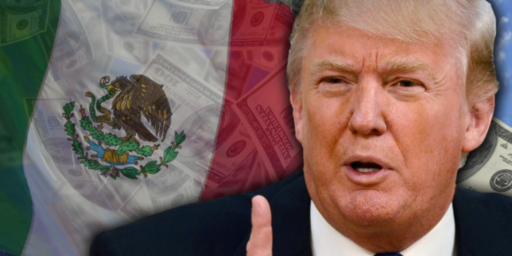
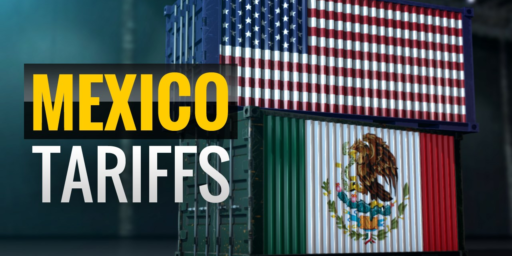
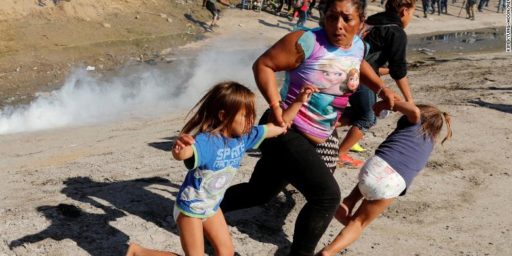
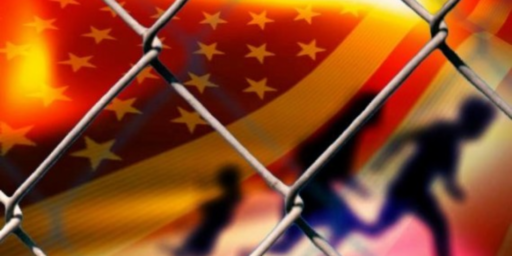

Since most of those coming illegally across our southern border are, in fact, job seekers, the way to disincentivize the migration is through serious, stringent workplace enforcement. Trump opposed that which is prima facie evidence supporting the claim that his motivation was racist or, at least, nativist.
@David Schuler:
While there a limited penalties aimed at some employers for hiring undocumented workers, they are seldom enforced and when they are, suit is quietly dismissed or settled for a paltry sum. No mechanism for border enforcement and immigration control can work as long as there is a reward for coming into the country and for employers, hiring those workers. The fact that congress and multiple administrations have been unwilling to punish employers for hiring undocumented workers is proof that much of the wailing about illegal immigration is preformative.
@Sleeping Dog:
My point precisely.
How are we determining this is the worst crisis in 20 years? It looks like it was worse in 2019. Dont remember a lot of panic over things back then. Also, looking at the numbers, we have pretty steady rise since last April. It looks to me like something happened in April. My guess is Covid thought there does seem to be a seasonal component anyway.
https://www.pewresearch.org/fact-tank/2021/03/15/migrant-apprehensions-at-u-s-mexico-border-are-surging-again/
Steve
By far the biggest problem with illegal immigration is people overstaying visas and work permits. While we focus on the Southern Border and those from Latin America, we ignore the tens of thousands that from Europe and Asia through other means, and just never leave. Hotel workers in in many US cities are undocumented Polish and Ukranian immigrants, not Mexican or Guatemalans. In most Asian “massage parlors”, the workers are undocumented immigrant Thai, Chinese or Vietnamese women. Until we punish businesses, the tide will not slow.
That’s an obligation on the first safe country, not on the refugees. If the first safe country does not, or cannot, take refugees, that does not mean the refugees are screwed forever and ever by an impenetrable wall of legality.
Otherwise, we could “solve” the refugee crisis by ceding a five mile wide strip along our border, declaring it an independent country, ruled by a benevolent dictator of our choosing, and insisting that refugees from the south must stay in Bordersylvania.
If you want refugees to stay in Mexico, you want a stronger, more prosperous Mexico with fewer drug lords and more ability to absorb those refugees.
Both parties’ management of immigration has been a disgraceful evasion of responsibility. Neither seems capable of articulating a coherent response to the most basic question: does America benefit from allowing immigration from south of the border, or not? If the answer is no, then the political discussion that follows should concern the most effective measures to prevent would-be immigrants from entering at all. If the answer is yes, then quite different issues have to be considered: how many, how are they to be selected and so on.
Biden to his credit has provided at least partial answers in a draft bill. The response of the Democrats in Congress has been pitifully inadequate. Jerry Nadler said “We need to engage in some consultation with key members and stakeholders,” as if immigration was all pretty novel stuff and needed a lot of thinking about.
Stop talking about border crossings as if they’re a problem that exists in a vacuum, and develop a robust argument about America’s immigration needs. Trump’s was that he wanted more Norwegians and fewer from shithole countries, so the bar for a policy isn’t high. But start by declaring unambiguously whether you want these people or not.